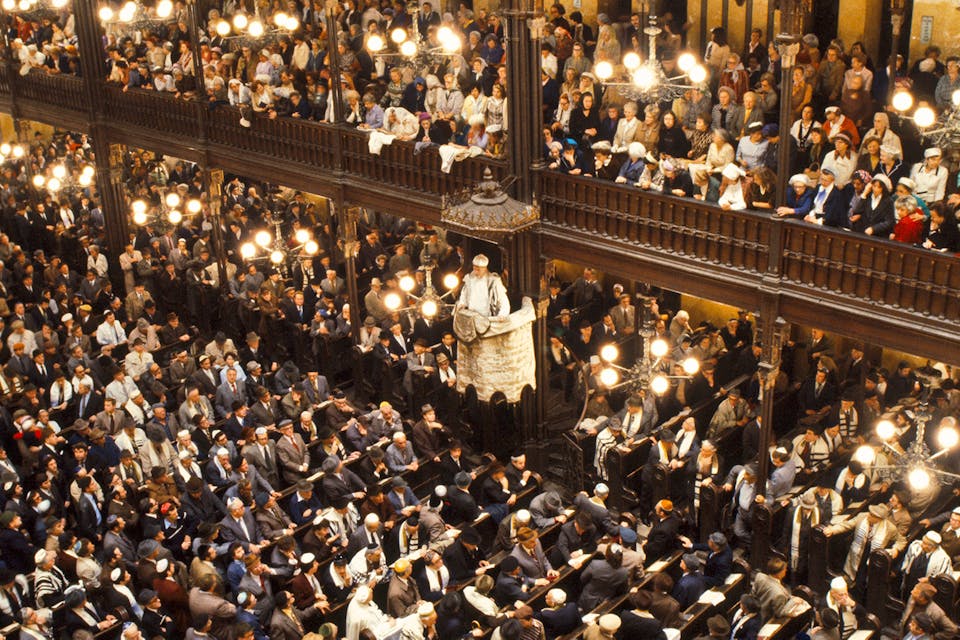
June 7, 2018
Is There a Physical Reality to God?
That's the question raised by a poem sung at many Ashkenazi services.
In many Ashkenazi synagogues, the concluding portions of the Sabbath morning service include the rhymed poem An’im Zmirot, known formally as “The Song of Glory,” a work distinguished by its ornate Hebrew and its shocking anthropomorphism.
The song’s theological nub derives from a uniquely explicit description in Exodus 33 of an encounter between man and the Almighty; in it, Moses asks God to show Himself to him, and the Lord obliges. This revelation occurs after the Lord—although He’s forgiven the sin of the golden calf—decides He needs some space from the constantly backsliding rabble He’s taken out of Egypt. He therefore declares that He will withdraw His presence from the Israelites and instead send an angel to travel with them to the promised land. But Moses starts to argue with Him about this, bringing us to the crux of the matter, which is also the crux of this song: how much of God can human beings actually touch?
Moses insists to the Lord that if His panim—a word usually translated as “presence” in this particular passage—won’t travel with the Israelites, then He will have ceased to treat them as His chosen people. On the other hand, were He to accompany them, then they would indeed be unlike any other people on the planet. The Lord grudgingly acquiesces. It is then that Moses asks to see God’s glory, and a conversation ensues about whether he can really be allowed to see the Lord’s panim, rendered here in its usual meaning of “face.”